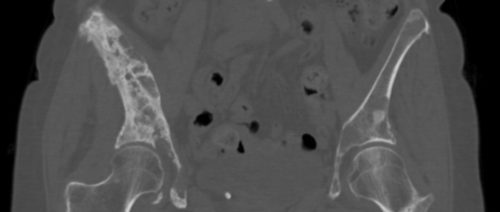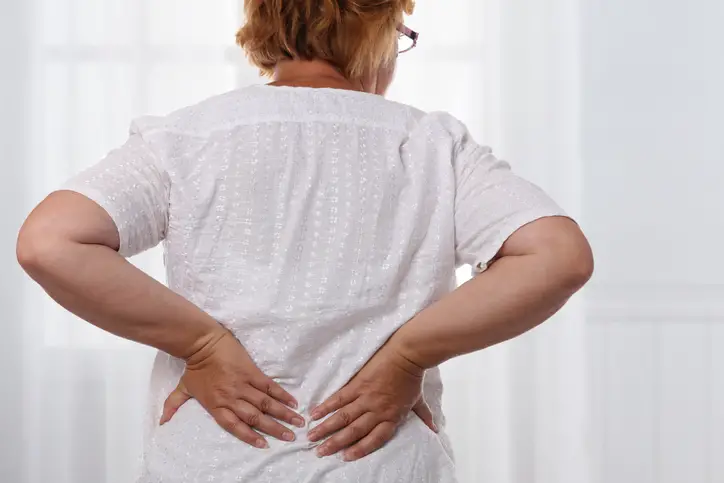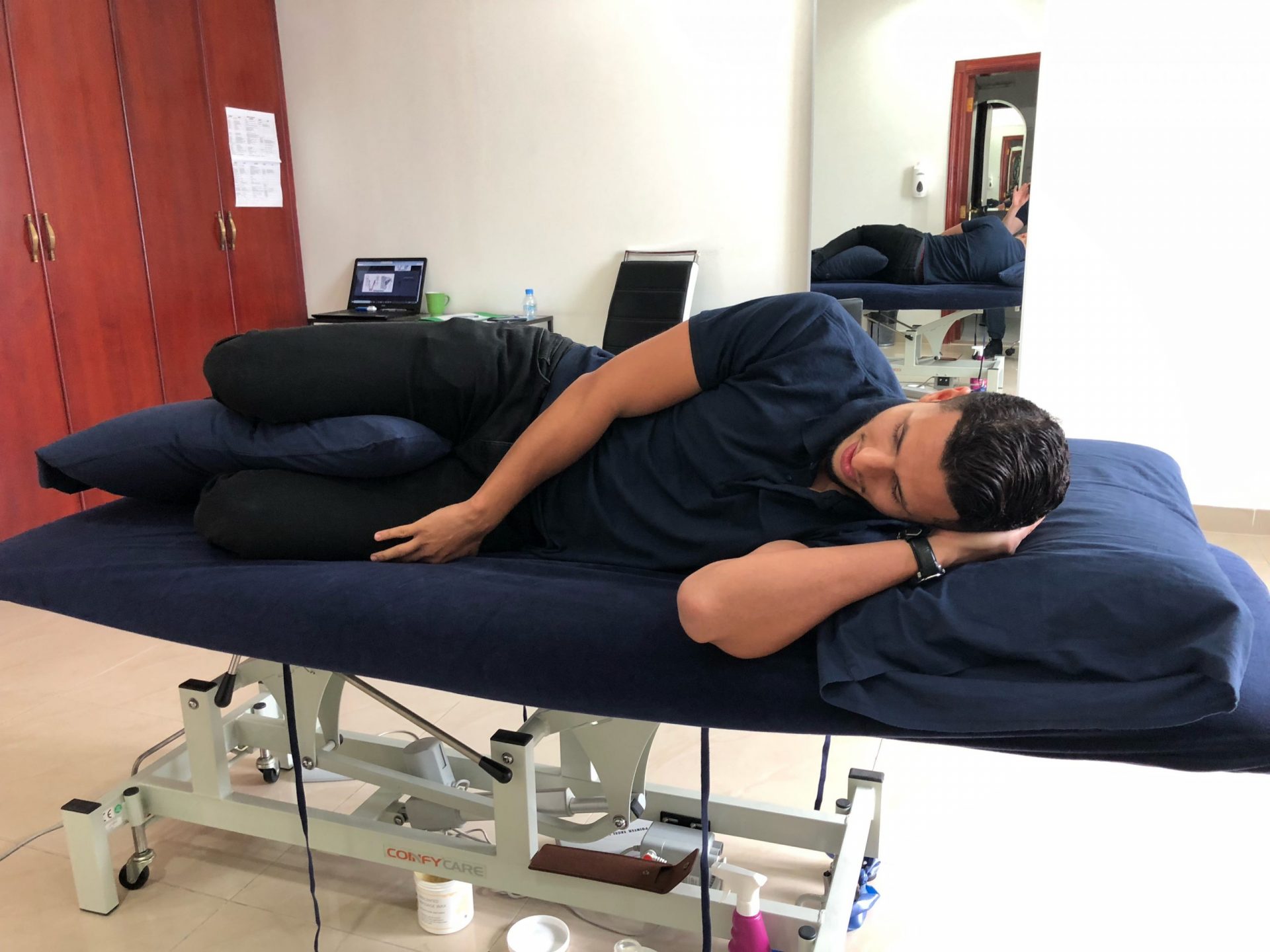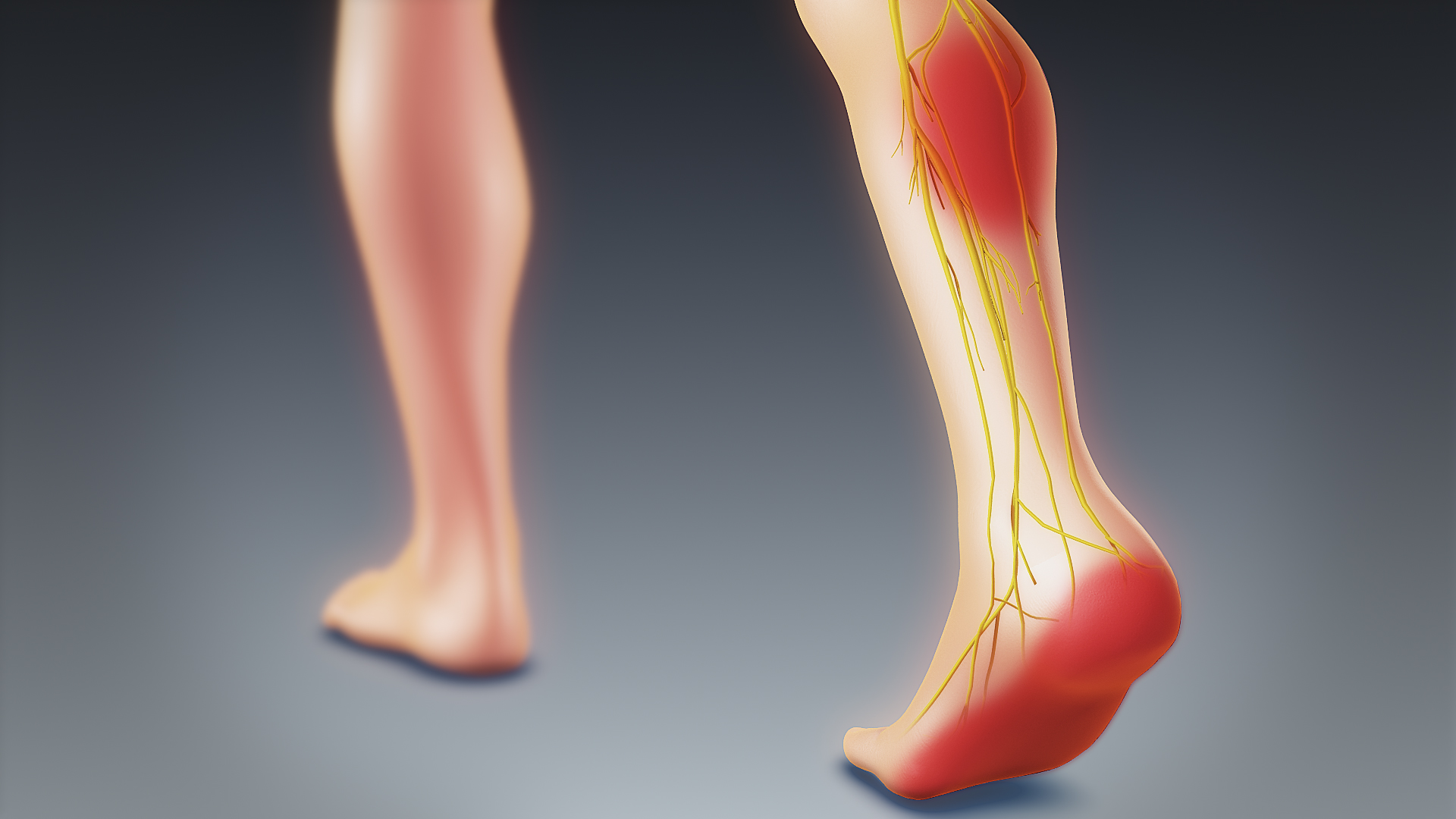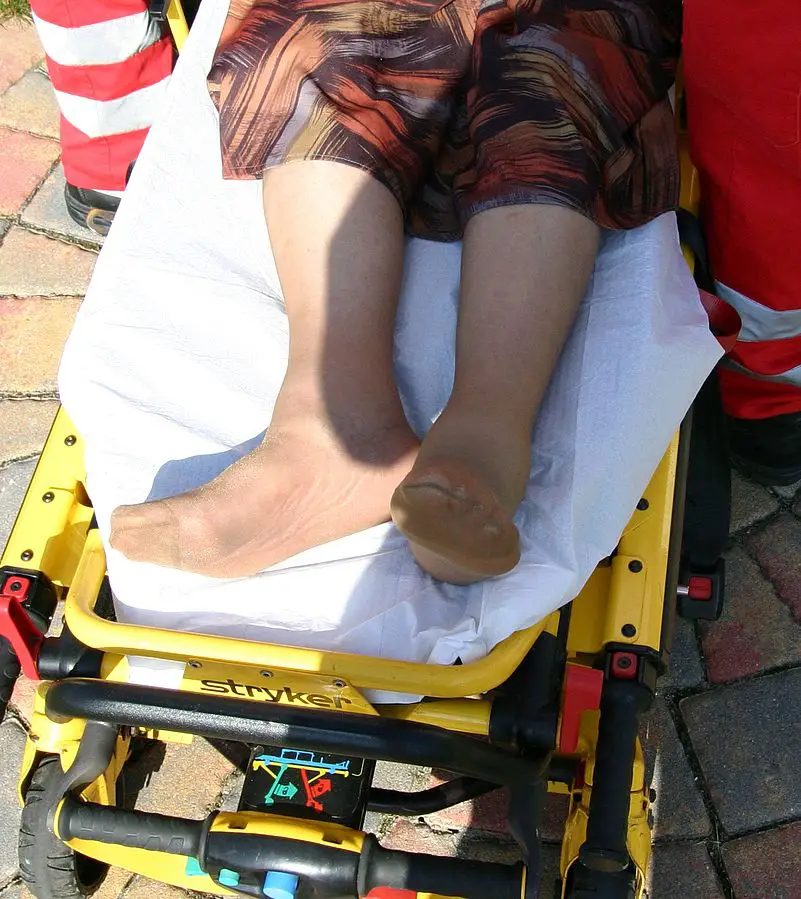La hip pain is a symptom of several conditions, including arthritis, pubalgia, hip injuries (fractures, labral tears and dislocation), bursitis, but also cancer. In this article, we will take a closer look at the causes of hip pain and the link between cancer and these pains.
Definition and anatomy
La hip corresponds to the joint that serves as a junction between the trunk and the legs. Also called coxo-femoral joint.
The unique anatomy of the hip allows it to be both strong and flexible. It supports the weight of the body and allows the movements of the lower limbs. The hip is located where the head of the femur fits into a rounded cavity in the pelvis.
The hip ball joint construction allows for three distinct types of flexibility.
- Hip flexion and extension: move the leg back and forth
- Hip abduction and adduction: move the leg to the side (abduction) and inwards towards the other leg (adduction).
- Rotation of the lower limbs: point the toes inward (internal rotation) or outward (external rotation) then move the straightened leg in the direction of the toes.
Also known asacetabulo-femoral joint, the structure of the hip consists of many elements.
- The hip bone: the femur, in particular the femoral head and the acetabulum of the pelvis
- Le articular cartilage which decreases the friction between the bones and allows a smooth gliding motion
- The muscles that support the joint and allow movement
- The ligaments and tendons: tough, fibrous tissues that connect bone to bone and muscle to bone
- La capsules: synovial and fluid membrane, which surrounds the hip joint and lubricates it.
The hip problems arise when one of these components begins to degenerate or is somehow harmed or irritated.
Focus on hip pain
Many conditions and injuries can cause hip pain.
Here are some examples of the most common causes.
Coxarthrosis (osteoarthritis of the hip)
La coxarthrosis results from the breakdown of articular cartilage. This gradually wears out with advancing age, which initially leads to inflammation. Then its surface becomes more and more frayed and rough. Thus, the protective joint space between the bones decreases and causes friction between the femoral head and the acetabulum.
Fracture and dislocation of the pelvis
La fracture and the hip dislocation are real sources of pain. To determine the diagnosis, it is essential to go through an X-ray.
Trochanteric bursitis (and iliopsoas)
This is an inflammation of the trochanteric bursa or the iliopsoas bursa. It is characterized by pain on palpation, but usually must be diagnosed by imaging tests.
Tendinopathy
Tendons are rope-like tissues that connect muscles to bones. Tendinopathy is an umbrella term for any tendon condition that causes pain and swelling.
Pubalgia
La pubalgia corresponds to a pain syndrome that appears in the pubic region. It results from repetitive microtrauma suffered by the soft tissues, muscles and joints, especially in the event of intense sport. This is also why we often observe this pathology in athletes.
Muscle ailments
It can be micro tears, contractures or even muscle imbalance.
The labrum
Le labrum is a fibro-cartilage that covers the edge of the acetabulum. It serves as a seal to fix the femoral head inside the cavity.
Labral tear due to certain sports (golf, football, etc.) is a source of groin pain.
rheumatoid arthritis
It is an autoimmune disease responsible for the chronic inflammation of the joints.
It can affect the fingers, hands, wrists, knees, ankles, feet and toes. And in severe cases, it sometimes attacks other parts of the body such as the skin, eyes, mouth, lungs and heart.
Avascular necrosis
Avascular necrosis is a painful bone condition that gets worse over time and can affect mobility. It occurs when the blood flow to the bones decreases or ceases.
Disc herniation or protrusion
This is nerve irritation caused by a hernia or disc protrusion.
Other back problems
This category includes several pathologies: degenerative disc disease, narrow lumbar canal, spondylolisthesis or sacroiliitis.
To learn more about the causes of hip pain, click here.
In rare cases, a hip pain can also be a sign of cancer.
Hip pain and cancer: what is the link?
Cancer is a rare but possible cause of hip pain.
These can be tumors that grow in the cells that make up bone, or tumors that arise from the spread of cancer cells outside their area of origin (metastases). Depending on the type, the tumor can be benign or malignant.
We will name a few.
Osteoma
This is the type of benign bone cancer most common in children and young people. It appears within osteoblastic cells. It often affects long bones like the femur. That's why it can touch the hip.
The chondroma
Le chondroma is another benign bone tumor. It is manifested by the abnormal protrusion of cartilage cells.
Sometimes it can associate with a bony growth and become what is called osteochondroma. This tumor has a strong predilection for long bones (distal femur, proximal tibia and proximal humerus).
Chondroblastoma: a cancer that can affect the hip
Chondroblastoma is a bone tumor that specifically affects the ends of the long bones (epiphyses). It often evokes a constant pain of the inflammatory type. This can radiate to the entire surrounding joint region and cause other symptoms such as stiffness and amyotrophy.
Bone metastases
We are talking about metastasis when the cancer spreads to another part of the body, away from its original site.
As regards the bone metastases, they can be secondary to all types of cancer: skin cancer, lung cancer, breast cancer, prostate cancer…
Osteosarcoma
Osteosarcoma is a malignant tumor that develops from metastases. It affects the osteoblasts which will mutate into cancerous cells.
As a reminder, osteoblasts have the role of synthesizing and mineralizing the bone matrix during the bone remodeling process.
Chondrosarcoma
Le chondrosarcoma is a malignant bone tumor that originates within cartilage cells. It is very frequently located in the arm, in the spine, in the pelvis, in the femur, in the knee and at the base of the skull.
This list is not definitive, there are still many other types of tumors like Ewing's sarcoma, fibroid, etc.
How to diagnose hip cancer?
In order to confirm the presence or not of cancer, the doctor generally refers to various specific examinations.
- A IRM (Magnetic resonance imaging) and an computed tomography (as an alternative to MRI): to determine the nature, location and extent of the tumour.
- A x-ray: to visualize the condition of the bones.
- A biopsy: confirms the nature of the cancerous lesion
- A bone scan: for an overview of the skeleton.
- A positron emission tomography (PET ou PET scan ou PET-CT): to confirm the existence of cancer and to assess the effects of treatment.
When to worry?
The cancer symptoms can vary greatly for each person. However, there are a few things that could indicate the first signs of the disease.
- A constant, progressive, non-mechanical pain on which analgesics have no effect.
- Severe abdominal pain.
- Constant night pain and night sweats.
- Significant and unexplained weight loss.
- Urinary or fecal incontinence of recent onset.
If the cancer is not primary (resulting from bone cells), other symptoms may appear. These are related to the original site. For example, an individual with lung cancer has persistent coughs.
In conclusion, it is true that the cancer is a rare cause of hip pain, but it is important to see a doctor as soon as possible if you have any of the symptoms mentioned above. This allows treatment to be implemented as soon as possible and to limit complications..
References
https://www.passeportsante.net/fr/parties-corps/Fiche.aspx?doc=hanche
https://www.doctissimo.fr/sante/encyclopedie-medicale/tumeurs-osseuses-hanche
https://www.passeportsante.net/fr/parties-corps/Fiche.aspx?doc=hanche

